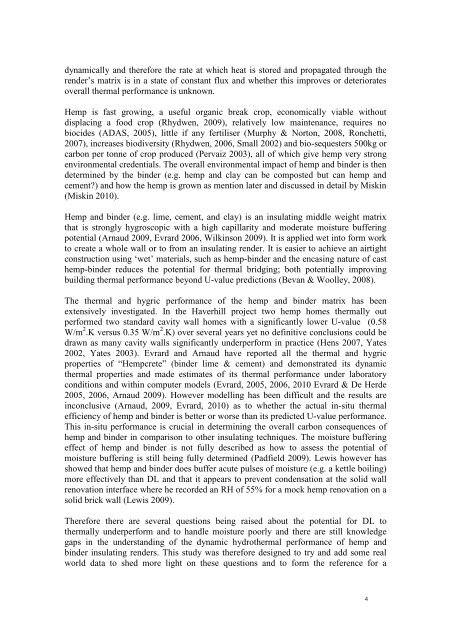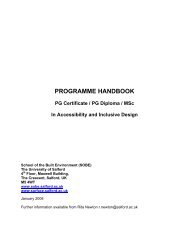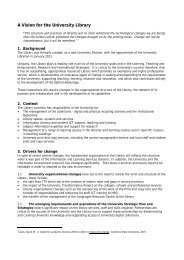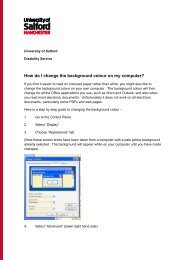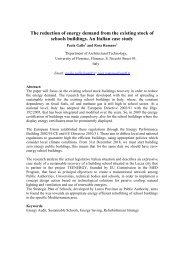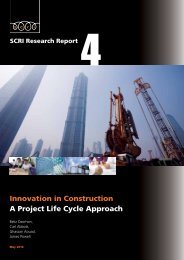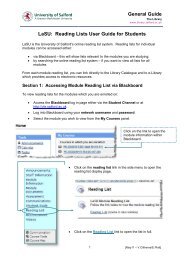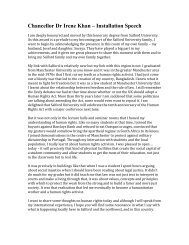Dry-lining versus a hemp and lime insulating render - University of ...
Dry-lining versus a hemp and lime insulating render - University of ...
Dry-lining versus a hemp and lime insulating render - University of ...
You also want an ePaper? Increase the reach of your titles
YUMPU automatically turns print PDFs into web optimized ePapers that Google loves.
dynamically <strong>and</strong> therefore the rate at which heat is stored <strong>and</strong> propagated through the<strong>render</strong>‘s matrix is in a state <strong>of</strong> constant flux <strong>and</strong> whether this improves or deterioratesoverall thermal performance is unknown.Hemp is fast growing, a useful organic break crop, economically viable withoutdisplacing a food crop (Rhydwen, 2009), relatively low maintenance, requires nobiocides (ADAS, 2005), little if any fertiliser (Murphy & Norton, 2008, Ronchetti,2007), increases biodiversity (Rhydwen, 2006, Small 2002) <strong>and</strong> bio-sequesters 500kg orcarbon per tonne <strong>of</strong> crop produced (Pervaiz 2003), all <strong>of</strong> which give <strong>hemp</strong> very strongenvironmental credentials. The overall environmental impact <strong>of</strong> <strong>hemp</strong> <strong>and</strong> binder is thendetermined by the binder (e.g. <strong>hemp</strong> <strong>and</strong> clay can be composted but can <strong>hemp</strong> <strong>and</strong>cement?) <strong>and</strong> how the <strong>hemp</strong> is grown as mention later <strong>and</strong> discussed in detail by Miskin(Miskin 2010).Hemp <strong>and</strong> binder (e.g. <strong>lime</strong>, cement, <strong>and</strong> clay) is an <strong>insulating</strong> middle weight matrixthat is strongly hygroscopic with a high capillarity <strong>and</strong> moderate moisture bufferingpotential (Arnaud 2009, Evrard 2006, Wilkinson 2009). It is applied wet into form workto create a whole wall or to from an <strong>insulating</strong> <strong>render</strong>. It is easier to achieve an airtightconstruction using ‗wet‘ materials, such as <strong>hemp</strong>-binder <strong>and</strong> the encasing nature <strong>of</strong> cast<strong>hemp</strong>-binder reduces the potential for thermal bridging; both potentially improvingbuilding thermal performance beyond U-value predictions (Bevan & Woolley, 2008).The thermal <strong>and</strong> hygric performance <strong>of</strong> the <strong>hemp</strong> <strong>and</strong> binder matrix has beenextensively investigated. In the Haverhill project two <strong>hemp</strong> homes thermally outperformed two st<strong>and</strong>ard cavity wall homes with a significantly lower U-value (0.58W/m 2 .K <strong>versus</strong> 0.35 W/m 2 .K) over several years yet no definitive conclusions could bedrawn as many cavity walls significantly underperform in practice (Hens 2007, Yates2002, Yates 2003). Evrard <strong>and</strong> Arnaud have reported all the thermal <strong>and</strong> hygricproperties <strong>of</strong> ―Hempcrete‖ (binder <strong>lime</strong> & cement) <strong>and</strong> demonstrated its dynamicthermal properties <strong>and</strong> made estimates <strong>of</strong> its thermal performance under laboratoryconditions <strong>and</strong> within computer models (Evrard, 2005, 2006, 2010 Evrard & De Herde2005, 2006, Arnaud 2009). However modelling has been difficult <strong>and</strong> the results areinconclusive (Arnaud, 2009, Evrard, 2010) as to whether the actual in-situ thermalefficiency <strong>of</strong> <strong>hemp</strong> <strong>and</strong> binder is better or worse than its predicted U-value performance.This in-situ performance is crucial in determining the overall carbon consequences <strong>of</strong><strong>hemp</strong> <strong>and</strong> binder in comparison to other <strong>insulating</strong> techniques. The moisture bufferingeffect <strong>of</strong> <strong>hemp</strong> <strong>and</strong> binder is not fully described as how to assess the potential <strong>of</strong>moisture buffering is still being fully determined (Padfield 2009). Lewis however hasshowed that <strong>hemp</strong> <strong>and</strong> binder does buffer acute pulses <strong>of</strong> moisture (e.g. a kettle boiling)more effectively than DL <strong>and</strong> that it appears to prevent condensation at the solid wallrenovation interface where he recorded an RH <strong>of</strong> 55% for a mock <strong>hemp</strong> renovation on asolid brick wall (Lewis 2009).Therefore there are several questions being raised about the potential for DL tothermally underperform <strong>and</strong> to h<strong>and</strong>le moisture poorly <strong>and</strong> there are still knowledgegaps in the underst<strong>and</strong>ing <strong>of</strong> the dynamic hydrothermal performance <strong>of</strong> <strong>hemp</strong> <strong>and</strong>binder <strong>insulating</strong> <strong>render</strong>s. This study was therefore designed to try <strong>and</strong> add some realworld data to shed more light on these questions <strong>and</strong> to form the reference for a4


